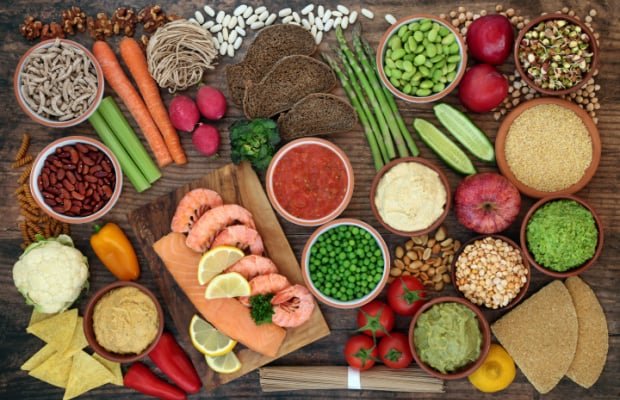In a world filled with fast food joints and convenience meals, it’s easy to neglect our nutritional needs. But with a well-crafted meal plan, you can take control of your diet and pave the way to a healthier, happier life. In this guide, we’ll explore the essential tips and tricks for creating a healthy meal plan that suits your lifestyle, tastes, and nutritional goals.
The Foundation of Health: Why Nutrition Matters
Good nutrition forms the cornerstone of overall well-being. A healthy meal plan provides your body with the essential nutrients it needs to function optimally, supporting everything from energy levels to immune function. Eating a balanced diet doesn’t just benefit your physical health – it also has profound effects on your mental and emotional well-being. A nutritious meal plan can improve mood, and cognitive function, and even reduce the risk of chronic diseases.
Overcoming Common Challenges: Identifying Obstacles to Healthy Eating

From busy schedules to cravings and emotional eating, many obstacles can derail your efforts to eat healthily. By recognizing these challenges, you can develop strategies to overcome them and stay on track with your meal plan. Before you can create a meal plan, it’s essential to define your health goals. Whether you’re looking to lose weight, boost energy levels, or prevent disease, having clear objectives will guide your meal planning efforts.
Assessing Dietary Preferences and Restrictions: Tailoring Your Meal Plan to Fit Your Lifestyle
Everyone’s dietary needs and preferences are different. Whether you’re vegan, gluten-free, or simply have a distaste for certain foods, it’s important to take your dietary preferences and restrictions into account when crafting your meal plan. Rome wasn’t built in a day, and neither are healthy eating habits. Set realistic goals for yourself and give yourself time to adjust to your new meal plan. Track your progress along the way and celebrate your successes, no matter how small.
The Importance of Macronutrients: Protein, Carbohydrates, and Healthy Fats
A balanced meal should include all three macronutrients: protein, carbohydrates, and fats. Protein helps build and repair tissues, carbohydrates provide energy, and healthy fats support cell function and nutrient absorption. In addition to macronutrients, your body also needs micronutrients – vitamins and minerals that play essential roles in various bodily functions. Aim to include a variety of fruits, vegetables, whole grains, and lean proteins in your meal plan to ensure you’re getting all the micronutrients you need.
The Power of Plant-Based Foods: Embracing Fruits, Vegetables, Whole Grains, and Legumes

Plant-based foods are rich in vitamins, minerals, fiber, and antioxidants, making them an essential part of a healthy meal plan. Aim to fill half your plate with fruits and vegetables at each meal, and incorporate whole grains and legumes for added fiber and protein. Don’t forget about hydration! Water is essential for digestion, nutrient absorption, and overall health. Aim to drink at least eight glasses of water a day, and consider adding hydrating foods like fruits and vegetables to your meal plan.
Mindful Eating: Paying Attention to Hunger Cues and Enjoying Food Mindfully
Mindful eating involves being present and fully engaged with your food, savoring each bite, and paying attention to hunger and fullness cues. Avoid distractions like TV or smartphones while eating, and take the time to appreciate the flavors, textures, and aromas of your meals. Flexibility is key to long-term success with meal planning. Don’t be afraid to experiment with new recipes and ingredients, and be willing to make adjustments to your meal plan as needed based on your changing tastes, preferences, and dietary needs.
Making a List and Sticking to It: Avoiding Impulse Buys and Unnecessary Temptations
Before heading to the grocery store, make a list of the items you need and stick to it. This will help you avoid impulse buys and unnecessary temptations, saving you time and money in the long run. The perimeter of the grocery store is typically where you’ll find fresh, whole foods like fruits, vegetables, lean meats, and dairy products. Focus your shopping efforts on these areas, and minimize your intake of processed and packaged foods.
Reading Labels: Understanding Nutrition Facts and Ingredient Lists

When shopping for packaged foods, take the time to read and understand the nutrition facts and ingredient lists. Look for foods that are low in added sugars, sodium, and unhealthy fats, and high in fiber, vitamins, and minerals. Shopping seasonally not only ensures that you’re getting the freshest, most flavorful produce, but it also supports local farmers and reduces your carbon footprint. Visit farmer’s markets or join a community-supported agriculture (CSA) program to access seasonal fruits and vegetables directly from the source.
Creating a Weekly Meal Plan:
When creating your weekly meal plan, aim to include a balance of macronutrients and micronutrients at each meal and snack. Include a variety of colors, flavors, and textures to keep things interesting and satisfying. Variety is the spice of life – and the key to a healthy meal plan! Don’t be afraid to experiment with different cuisines, flavors, and cooking techniques to keep your meals exciting and flavorful.
Preparing for Success: Organizing Ingredients, Recipes, and Cooking Tools in Advance
Before diving into meal prep, take some time to organize your ingredients, recipes, and cooking tools. This will help streamline the process and make meal prep feel less overwhelming. Don’t get stuck in a rut with your meal plan – keep things exciting by exploring new recipes and ingredients. Try out different cooking methods, spices, and flavor combinations to keep your taste buds happy. Mealtime is about more than just nourishing your body – it’s also an opportunity to connect with loved ones. Get the whole family involved in meal planning and cooking, and turn mealtime into quality time spent together.
Celebrating Achievements: Rewarding Progress and Staying Motivated on Your Health Journey

As you progress on your health journey, be sure to celebrate your achievements along the way. Whether it’s reaching a weight loss milestone, sticking to your meal plan for a week straight, or mastering a new recipe, take the time to acknowledge and reward your progress. Nobody’s perfect – and that’s okay! If you slip up or veer off track with your meal plan, practice self-compassion and forgive yourself. Use setbacks as learning opportunities and recommit to your health goals with renewed determination.
Conclusion:
Crafting a healthy meal plan is a journey, not a destination. By following the tips and tricks outlined in this guide, you can take control of your diet, nourish your body with wholesome foods, and embark on a path to improved health and wellness. Remember, healthy eating is not about perfection – it’s about progress, consistency, and finding joy in nourishing your body and soul. So, what are you waiting for? Start planning, start cooking, and start thriving with your Healthy meal plan today!

